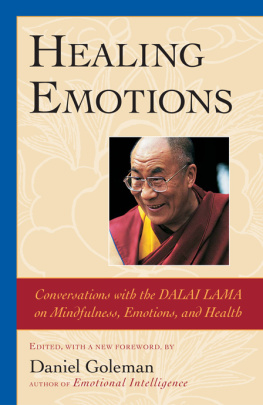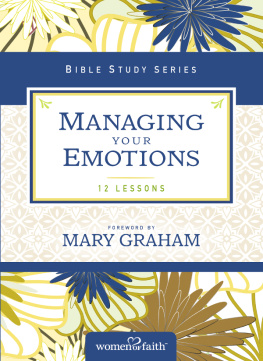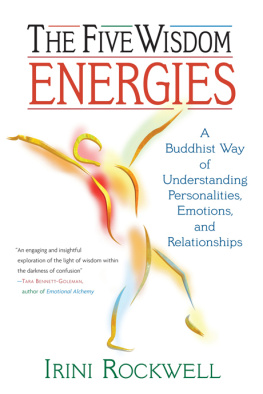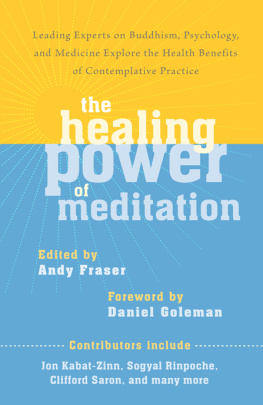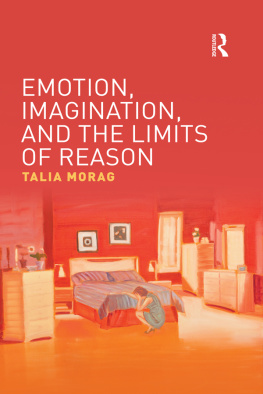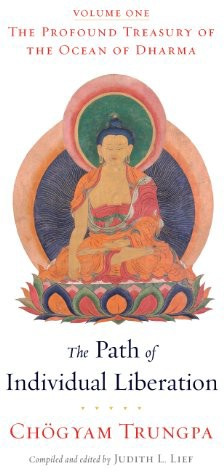Our emotional life can be a prison of suffering or a portal to profound heart-wisdom. In this brilliant synthesis of Tibetan Buddhist teachings and Western psychology, Rob Preece offers a rich guide for healing and spiritual awakening.
Tara Brach, PhD, author of Radical Acceptance and True Refuge
On the path to greater freedom and wisdom, psychotherapy typically encourages us to get to know our feelings, even to follow them into stories of meaning and action. Buddhism, on the other hand, tends to encourage us to temper or ignore our feelings as a means to liberation from suffering. Rob Preece guides us in a tremendously useful and practical dialogue between these two disciplines.
Polly Young-Eisendrath, PhD, author of The Resilient Spirit and The Present Heart
This book shows us very clearly how feelings can be a path to enlightenment and how wounds can turn into resources. I was especially touched by the way Rob writes directly to us as a wise, kindly, and compassionate teacher-friend.
David Richo, PhD, author of How to Be an Adult in Relationships and The Five Things We Cannot Change
ABOUT THE BOOK
The realm of emotion is one of those areas where Buddhism and Western psychology are often thought to be at odds: Are emotions to be valued, examined, worked with as signs leading us to deeper self-knowledge? Or are they something to be ignored and avoided as soon as we recognize them? Rob Preece feels that neither of those extremes is correct. He charts a path through the emotions as they relate to Buddhist practice, showing that though emotions are indeed skandhas (elements that make up the illusory self) according to the Buddhist teaching, there is a good deal to be learned from these skandhas, and paying attention to their content contributes not only to psychological health but to deep insight into the nature of reality. He draws on his own experiences with emotions and meditation, through his training in both Tibetan Buddhism and psychotherapy, to show how working with emotions can be a complement to meditation practice.
ROB PREECE has been a practicing Buddhist since 1973, principally within the Tibetan tradition. He has spent many years in intensive retreat in the Himalayas under the guidance of eminent Tibetan lamas. Preece has been working as a psychotherapist since 1987 and gives workshops on comparative Jungian and Buddhist psychology. An experienced meditation teacher and thangka painter, he lives in London and is the author of The Wisdom of Imperfection and The Psychology of Buddhist Tantra .
Sign up to learn more about our books and receive special offers from Shambhala Publications.

Or visit us online to sign up at shambhala.com/eshambhala .
feeling wisdom
Working with Emotions Using Buddhist Teachings and Western Psychology
Rob Preece

SHAMBHALA
Boston & London
2014
Shambhala Publications, Inc.
Horticultural Hall
300 Massachusetts Avenue
Boston, Massachusetts 02115
www.shambhala.com
2014 by Rob Preece
Cover art: Getty Images
Cover design by Gopa & Ted2, Inc.
All rights reserved. No part of this book may be reproduced in any form or by any means, electronic or mechanical, including photocopying, recording, or by any information storage and retrieval system, without permission in writing from the publisher.
Library of Congress Cataloging-in-Publication Data
Preece, Rob, author.
Feeling wisdom: working with emotions using Buddhist teachings and western psychology / Rob Preece.First edition.
pages cm
Includes bibliographical references.
eISBN 978-0-8348-2993-0
ISBN 978-1-61180-168-2 (alk. paper)
1. BuddhismPsychology. 2. EmotionsReligious aspectsBuddhism.
I. Title.
BQ4570.P76P73 2014
294.344dc23
2014011587
Contents
by Anna Murray Preece
I WISH TO DEDICATE THIS WORK to all of those people who have opened their lives to me and shared their vulnerabilities and their emotional struggles throughout the past twenty-five years of my work as a psychotherapist. I offer my gratitude for their trust and their dedication to the journey they embarked upon. I have learned so much through them. I would also like to offer my gratitude to my wife, Anna, whose natural wisdom in relation to the world of feeling has always been a source of insight and inspiration. Her experience of working with the body through movement is an invaluable addition to the text. Lastly, I would like to dedicate this work to my root teacher, Lama Thubten Yeshe, who passed away in 1984 and whose understanding of and compassion for the complexity of Western emotional life was an extraordinary guiding light.
POSSIBLY THE SINGLE STRONGEST motivating factors in our lives are our feelings. We can see this on the level of strong emotions like anger or subtler feelings of care and compassion. Whether we are able to be aware of these feelings and live in relation to them or whether they drive us unconsciously depends on the individual. They are in any case there in our body. For most of us the way we learn to live with our emotional and feeling life arises in a relatively arbitrary way. I was certainly never given any guidance when I was at school or growing up regarding how to cope with strong emotions and feelings. Unfortunately, there was something of a taboo, for a man in the United Kingdom, around expressing feelings, and so I felt they needed to be held in and potentially suppressed.
When I became involved in Tibetan Buddhism at a young age some forty years ago, one of my hopes was that it would offer me a way of both understanding and working with my emotional life. What I found was that within the world of Buddhist thinking, there are contrasting views around the subject of feeling and emotion and how we are supposed to deal with them or work with them. There is one view that sees feelings and emotions as something that should be controlled and overcome because they are the root of suffering. Then there is another perspective that sees emotions as the source of transformation. It is often because of problems with our emotional life that some of us study Buddhist ideas and meditation practices that might offer a kind of panaceabut is it that simple?
One of my reasons for engaging with Buddhist practice was that I often suffered periods of depression and anxiety when I was in my twenties. I found that Buddhist thinking gave some valuable answers that were often of an existential nature. Its recognition of the root of suffering in the way we grasp at a sense of self was radical for me at the time. What I needed to find, however, was a way of actually addressing and dealing directly with strong emotional states such as depression. I spent many years studying profound teachings on Buddhist philosophy, psychology, and what is known as mind training, and yet I did not feel that what I was experiencing psychologically was really being addressed. While many of these teachings provided a significant cognitive, intellectual understanding of Buddhist psychology, I still seemed unable to resolve the more painful and complex aspects of my emotional life. I found myself in a place of some conflict because I felt that within my study of Buddhist philosophy, I had begun to place all feelings and emotions in one bag as things that needed to be pacified because they give rise to suffering.
It was during a period of retreat that I began to discover a different Buddhist approach that did provide a means of working with my emotional life and with the depressions I experienced. This was an approach that went beneath my conceptual, intellectual knowledge and related more directly to my experience, exemplified by the practice known as Mahamudra, which was taught me by my teacher Lama Thubten Yeshe. This practice from the Tibetan tradition has many similarities to what is now familiar in the West as the practice of mindfulness. Mahamudra specifically leads us to rest in a state of present awareness, the natural clarity of the mind. Within this state of clear, present awareness, I began to live with painful feelings in a way that actually helped for the first time. I found myself able to witness feelings without drowning in their power. My relationship to feelings became much more open, accepting, and less of a struggle.
Next page

